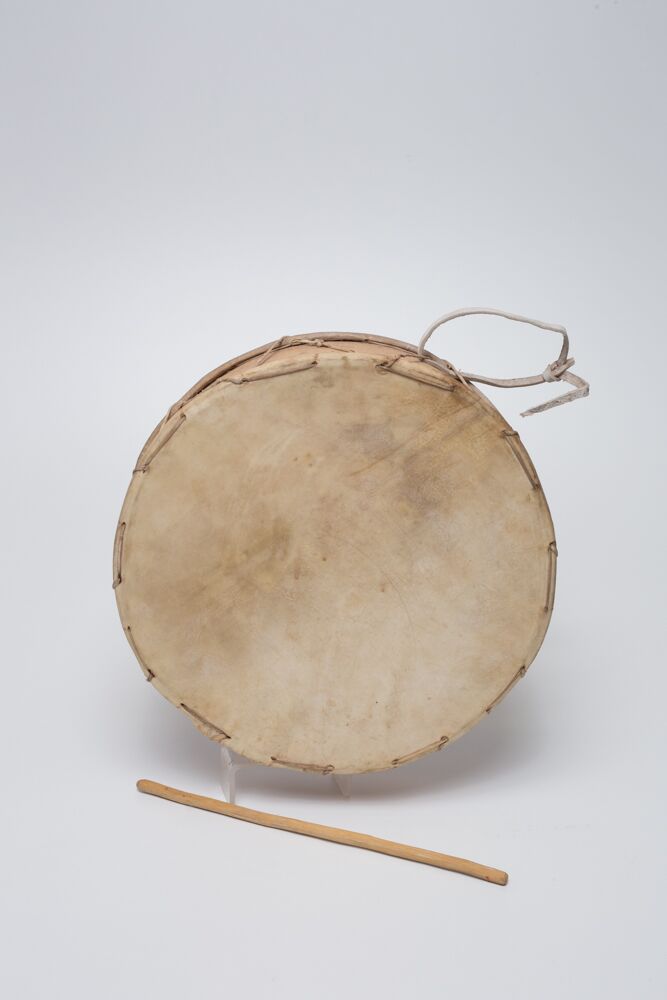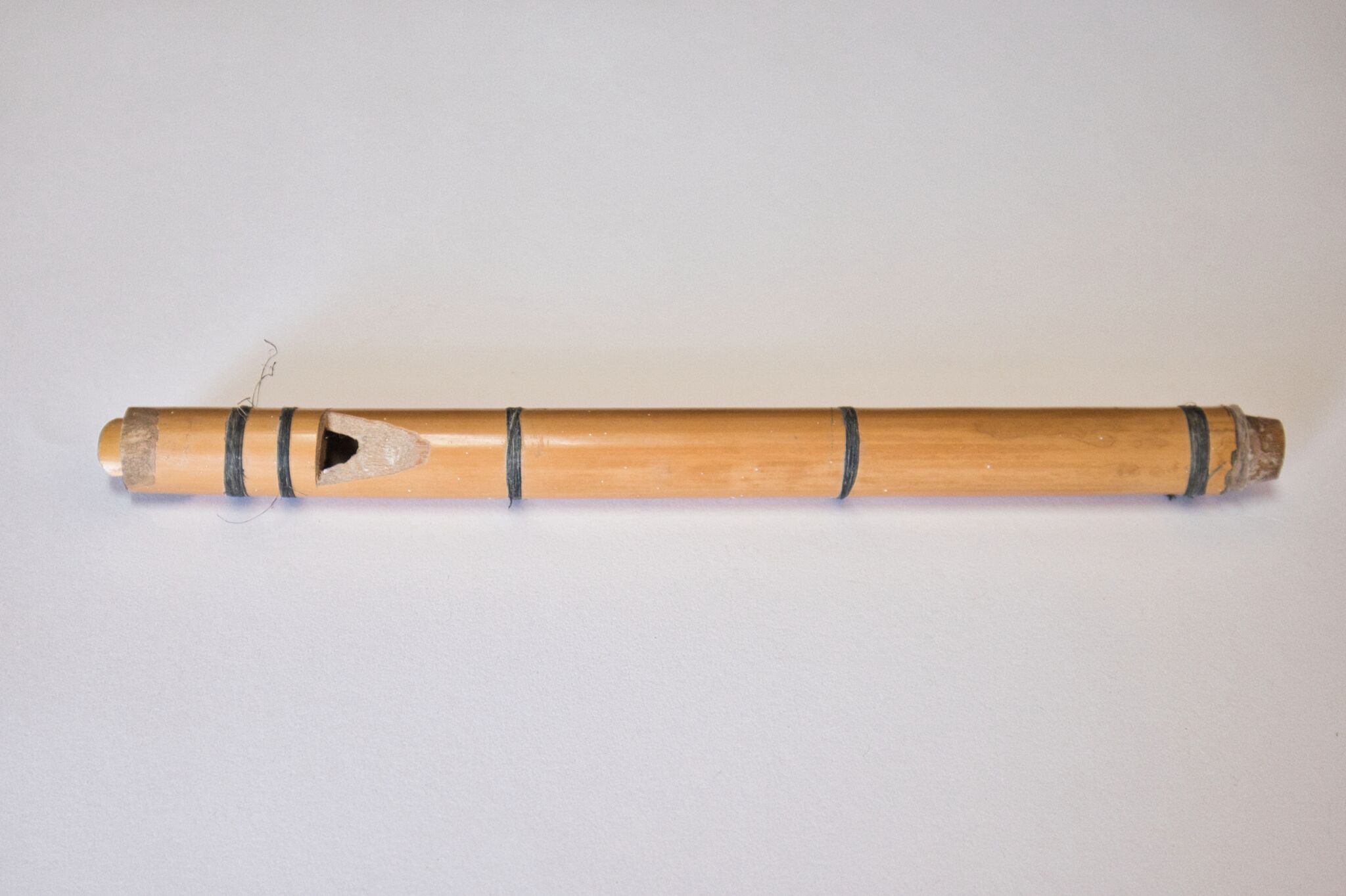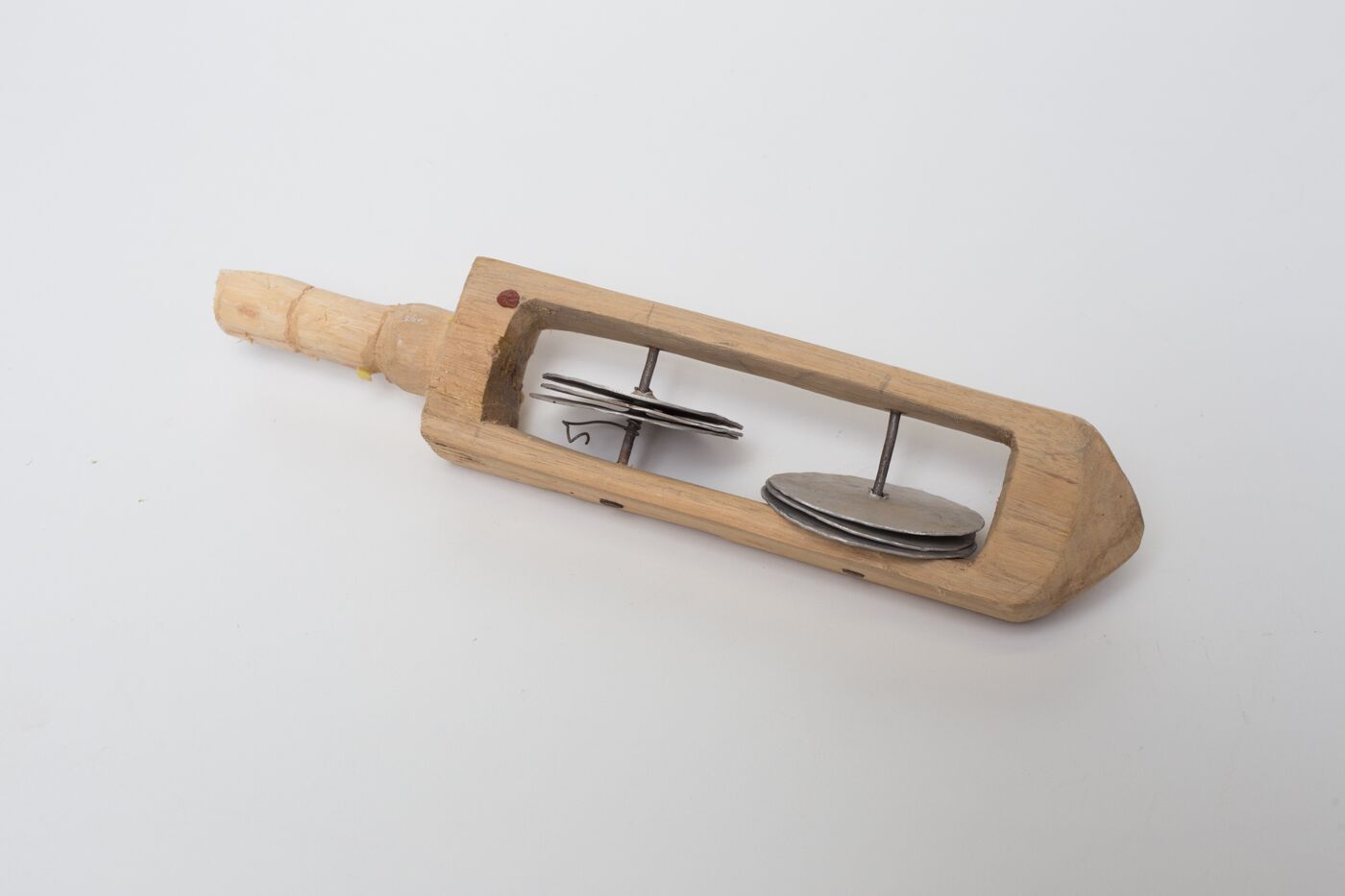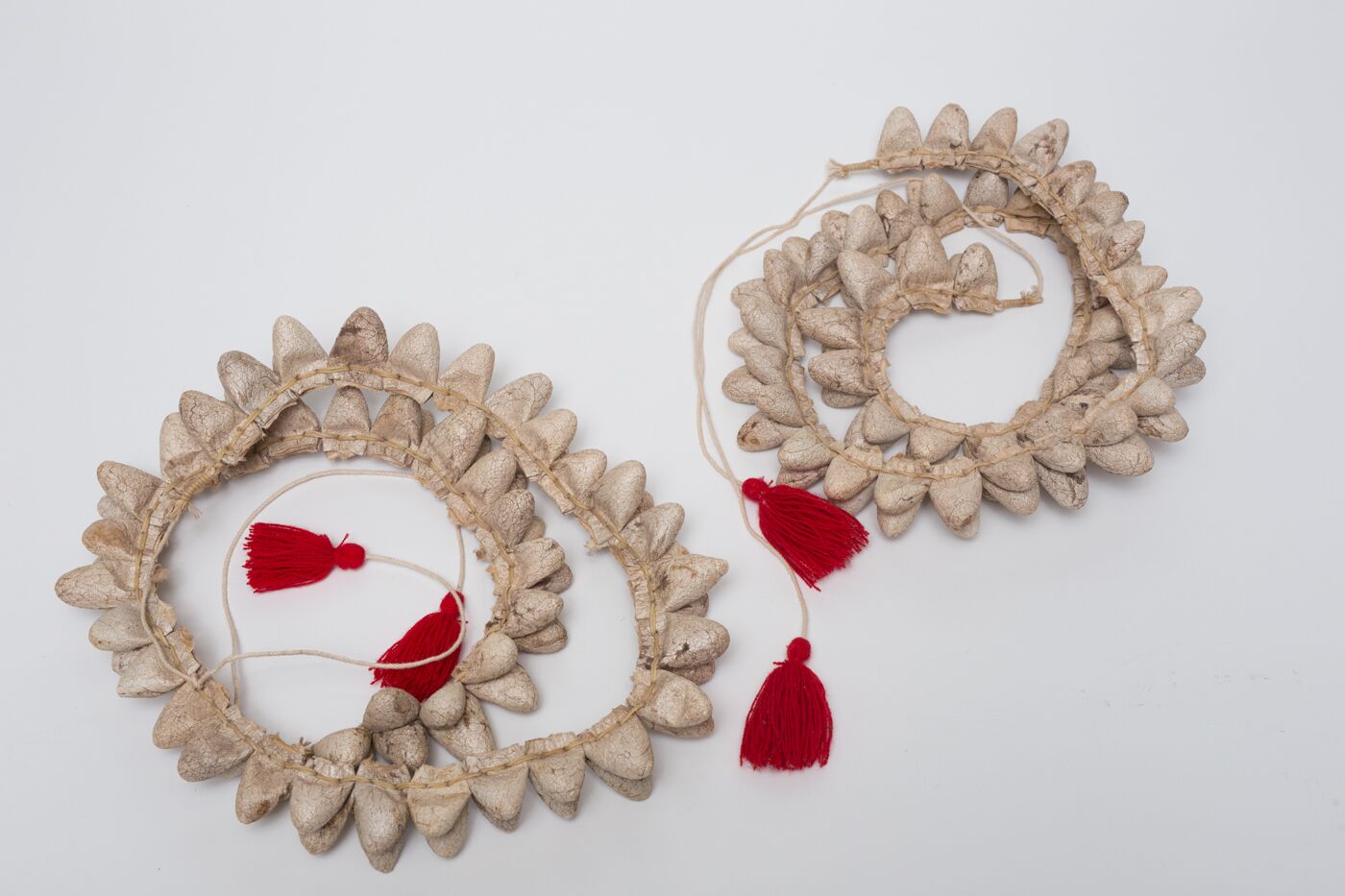-
 TamborDownload
TamborDownload
The double-headed drum is made up of a willow wood hoop, goatskin heads and leather cord stitching. The drumsticks are made from mesquite wood, or gótobo (black rod). Several studies have shown that percussion instruments such as the drum have existed since prehistoric times in many cultures of the world, among which the Yaqui is surely also found. The drumsticks used to produce the sound of the drum can vary depending on the use or dance, for the pascolas it is one; those used by the wiko ya'ura (military government) are two, as well as those used by the matachines. The drum for the latter is also distinguished by having a string with a vibraphone function. In times of war the drum was used to warn the members of the tribe of possible dangers. In colonial times it also marked the hours of prayer in daily life. It is currently used for the Deer dance, but also to invite the people to the beginning of a celebration or ritual. In the Ave Maria ritual that is celebrated in the komunila (official Yaqui government compound), it is played at six in the morning, at noon and at six in the evening. It is also used to wake up the stars when there is an eclipse, as it is believed that they have fallen asleep.
Metadata
Title
Drum
Alternative title
Kúbaji
Creator
Yaqui tribe
Created
2008
Description
Original object (physical):
Dimensions: Drum 38 X 9.5 cm. / Drumstick 35 X 1. cm.
Wood and leather technique
Description
The double-headed drum is made up of a willow wood hoop, goatskin heads and leather cord stitching. The drumsticks are made from mesquite wood, or gótobo (black rod). Several studies have shown that percussion instruments such as the drum have existed since prehistoric times in many cultures of the world, among which the Yaqui is surely also found. The drumsticks used to produce the sound of the drum can vary depending on the use or dance, for the pascolas it is one; those used by the wiko ya'ura (military government) are two, as well as those used by the matachines. The drum for the latter is also distinguished by having a string with a vibraphone function.
In times of war the drum was used to warn the members of the tribe of possible dangers. In colonial times it also marked the hours of prayer in daily life. It is currently used for the Deer dance, but also to invite the people to the beginning of a celebration or ritual. In the Ave Maria ritual that is celebrated in the komunila (official Yaqui government compound), it is played at six in the morning, at noon and at six in the evening. It is also used to wake up the stars when there is an eclipse, as it is believed that they have fallen asleep.
Subject
Musical instruments--Mexico--Ethnic groups | Religion and culture--Sonora (Mexico : State)--Holy Week | Yaquis--Social life and customs
Format
Still image / jpg
Spatial
Sonora , Cócorit
Temporal
2001 - 2010
Is part of
Music and dance room, Museum of the Yaqui people
Provenance
Museum of the Yaqui people. Sinaloa and Obregon No. 200, Cocorit, Cajeme, Sonora
Acquired for the reopening of the museum in the town of Cócorit. It is exhibited in the traditional festival room of the Museum.
Language
eng , yaqui
Date
2021-09-16
Identifier
Web Catalogación Obregón 2016 - 2708
ISC-CGPC-MY-0006
RS-OM-MEY-06
Relationship
Flute | Pascola Drum | Water Drum | Coyote dancer | Bow | Arrows | Coyote dancer video
Contributor
Sonoran Institute of Culture
Casanova, Juan (photography)
Buitimea Flores, Teodoro; Ruiz Félix, José María (investigation)
Valencia, Carlos ; The Yaqui Pride Project (translation to english)
License

This work is licensed under a Creative Commons Attribution-NonCommercial-ShareAlike 4.0 International License.
Rights
Sonoran Institute of Culture



